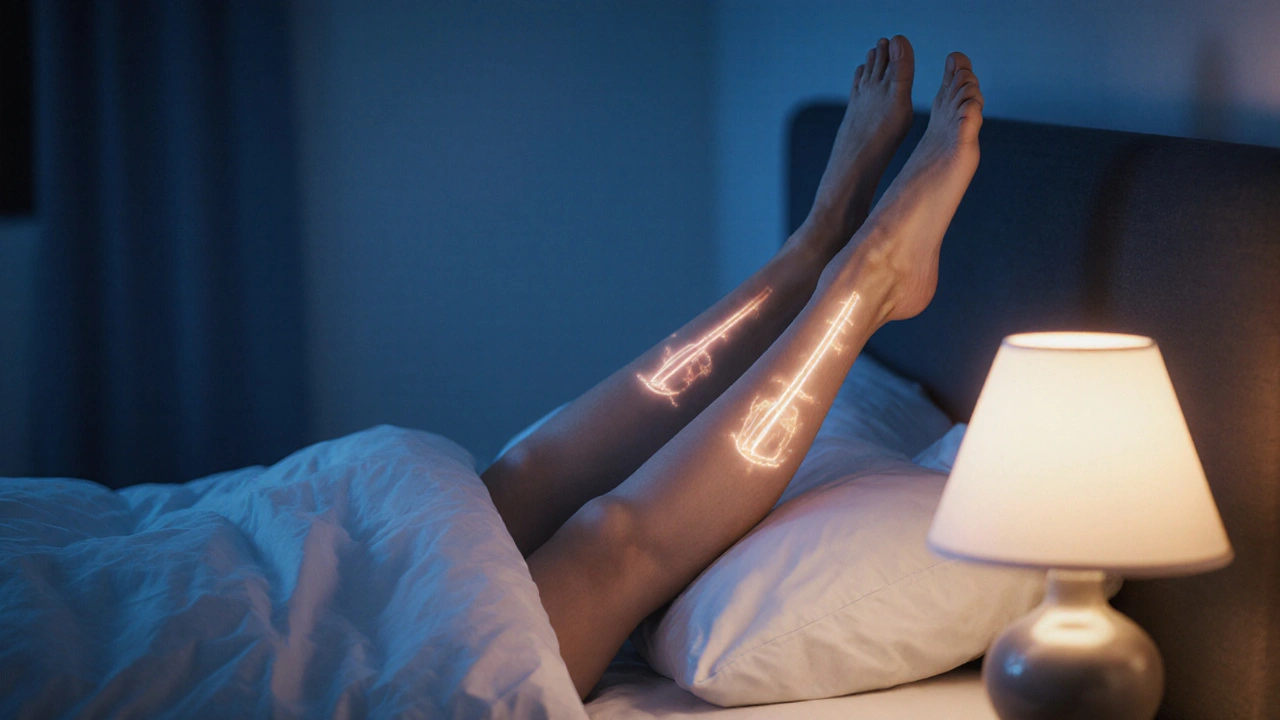Sleep Hygiene for Restless Leg Syndrome (RLS)
When you hear sleep hygiene for RLS, a set of bedtime habits designed to calm restless leg symptoms and improve overall sleep quality. Also known as restless‑leg sleep management, it combines environmental tweaks, timing strategies, and health checks to keep leg movements at bay.
Understanding Restless Leg Syndrome, a neurological condition that triggers uncomfortable sensations and urges to move the legs, especially at night is the first step. The condition often links to iron deficiency, low serum ferritin that can worsen nerve excitability, and it may respond to dopaminergic medication, drugs that boost dopamine activity to reduce leg urges. Good sleep hygiene doesn’t replace medical treatment, but it creates a supportive backdrop that can amplify therapeutic effects.
Key Elements of Effective Sleep Hygiene
First, align your bedtime with your circadian rhythm, the body’s internal clock that regulates sleep‑wake cycles. Going to bed and waking up at consistent times helps stabilize dopamine release, which in turn eases RLS spikes. Second, create a cool, dark, and quiet bedroom; temperature around 65 °F (18 °C) and blackout curtains reduce sensory triggers that can make legs twitch.
Third, incorporate a short, low‑intensity leg‑stretch routine 30 minutes before lights‑out. Gentle calf raises, ankle circles, or a brief walk can lower the overnight urge to move. Fourth, limit caffeine, nicotine, and alcohol after midday; each of these substances can heighten dopamine fluctuations and aggravate leg sensations.
Fifth, watch your iron intake. Foods rich in heme iron—lean red meat, poultry, and fish—paired with vitamin C for better absorption can raise ferritin levels over time. If tests show a deficit, a doctor‑prescribed iron supplement can be a game‑changer for RLS symptoms.
Finally, keep a sleep diary. Note bedtime, wake time, leg urges, and any medication adjustments. This data helps you and your clinician spot patterns, tweak dosages of dopaminergic agents, and fine‑tune your hygiene routine.
All these pieces—consistent schedule, optimal bedroom setup, gentle pre‑sleep movement, substance moderation, iron management, and tracking—form a coherent strategy. By weaving them together, you create an environment where the brain’s dopamine pathways stay balanced, leg sensations calm down, and you drift into deeper, uninterrupted sleep.
Below you’ll find a curated collection of articles that dive deeper into each of these topics, from medication comparisons to iron‑rich diet guides and practical bedtime rituals. Use them as a toolbox to build your own personalized sleep‑hygiene plan for RLS.
Create a Restless Leg Syndrome Sleep Environment: Step‑by‑Step Guide
Learn how to set up a bedroom that soothes Restless Leg Syndrome. Follow step‑by‑step tips on mattress choice, temperature, lighting, supplements, and sleep hygiene for a calmer night.






